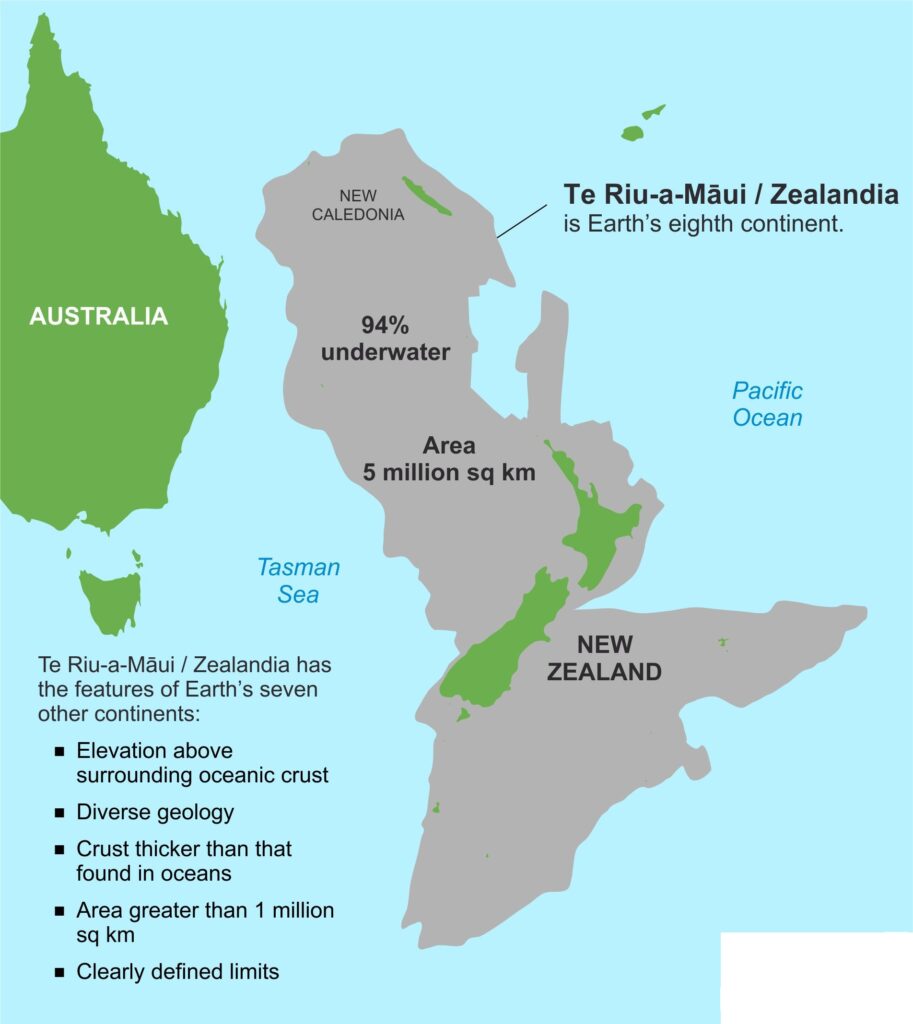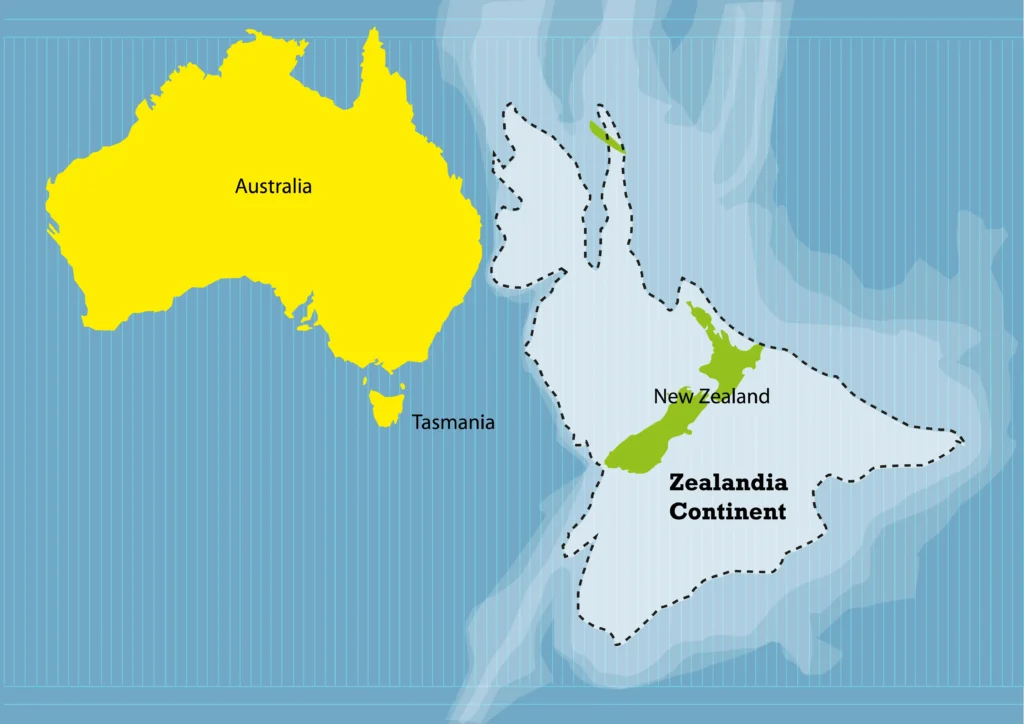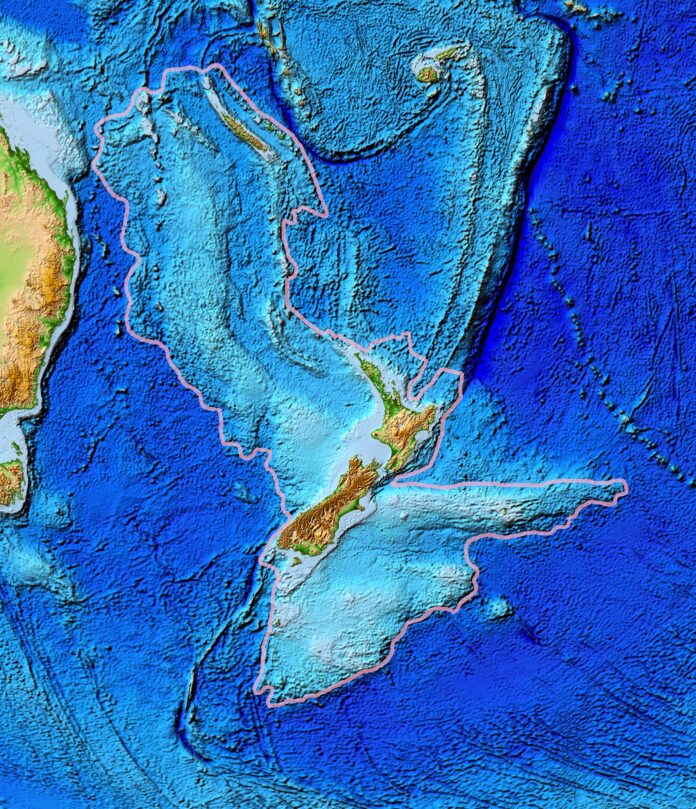Zealandia, the eighth continent discovered. Scientists have released a map of the world’s eighth continent. This map has revealed how the world’s eighth continent was formed and why it sank into the sea. Zealandia was formed about 83 million years ago, during the Late Cretaceous. Before that, it was a part of Gondwanaland.

Zealandia, the eighth continent discovered
In 1820 sailors on a Russian ship saw a vast shore of ice strangely populated with penguins on the horizon. This was the first view of the Fimbul Ice Shelf. And…it marked the official discovery of a new continent, Antarctica. This further strengthened the modern idea that there were seven major landmasses in the world. Most maps of the English-speaking world also acknowledged the existence of Antarctica before its discovery. Today schoolchildren, explorers, and politicians generally accept the division of the world’s landmass into these simple units, which include Europe, Asia, Africa, North America, South America, Australia, and Antarctica.
2. Eight continents were predicted 375 years ago (Zealandia, the eighth continent discovered)
But in 2017, the story took an unexpected turn, suggesting that the seven-continent model had been a mistake all along. The discovery of Zealandia, a long-lost piece of land in the south-east of Australia, has taken everyone by surprise. Zealandia is also known as the forgotten eighth continent of the Earth. Scientists had long predicted this unknown southern land mass, but it remained missing for 375 years because it is almost completely submerged under 1 to 2 km of water. But, scientists are now beginning to uncover its secrets.
3. Scientists released a map of Zealandia
This month an international team of researchers released the most accurate map of Zealandia yet. It covers all 50 lakh square kilometers of the underwater area and its geology. In the process, they have discovered clues as to how this mysterious continent formed and why it has remained hidden beneath the waves for the past 25 million years.(Zealandia, the eighth continent discovered)
4. Zealandia was formed 8 crore years ago
Zealandia is believed to have formed about 83 million years ago, during the Late Cretaceous. However, its journey began 100 million years ago, when the supercontinent of Gondwana began to break apart. At that time, the Gondwana continent covered most of today’s land in one huge area. As it disintegrated, the world’s smallest, thinnest, and youngest continent collapsed upon itself, while the regions of Gondwana that once lay directly northwest and southwest of it became Australia and Antarctica, respectively.
5. Zealandia drowned in the sea 25 million years ago
It is thought that Zealandia may have formerly entirely or partially been an island. But then about 25 million years ago, it disappeared beneath the sea. The first real clue is that New Zealand may be a tiny, seemingly unexplored part of a vast secret landmass. It first came to light in 2022, when scientists used bathymetry (studying the depth under water) to analyze the area. We now call it Zealandia. The ocean above Zealandia is significantly shallower than the ocean surrounding it, suggesting that the region was not beneath an oceanic tectonic plate – like most of the world’s oceans – but rather a continental one. Zealandia, the eighth continent discovered.
6. 95% of Zealandia submerged in water

Zealandia, the eighth continent discovered
The turning point came in 2017, when scientists brought together a body of evidence, including data about the type of rocks present and their relative thickness. Oceanic plates are thin, while this one is quite thick. This was enough to propose that Zealandia was actually a new continent. It is not merely a continental fragment or microcontinent, as previously proposed, but an actual continent, 95% of which is submerged underwater. However, despite excitement over the discovery of a new continent and more than a decade of intensive research, many details of the early formation of Zealandia remain unclear. This is partly due to a strange event that happened when it broke apart from Gondwana.
7. What was the reason for the sinking of Zealandia?
A multinational group of researchers mapped South Zealandia’s geology in 2019. His research revealed that at some point, Zealandia was stretched. That is, the force applied to the tectonic plates had separated them. This caused the Zealandia continent to become thinner than regular continental plates and created cracks that later became oceanic crust. In the process, the continent deformed and made reconstructing its history more challenging to its original form.
The researchers’ analysis of the lost continent’s rocks revealed that the stretching occurred in two phases. The first occurred about 89–101 million years ago and created a rift that became the Tasman Sea between Australia and New Zealand. The second phase began 80–90 million years ago and resulted in the separation of Zealandia from Western Antarctica and the formation of the Pacific Ocean.
8. Study of rocks of Zealandia
Scientists this time analyzed rocks that were extracted from Fairway Ridge in the South Pacific off the coast of Australia, the northernmost tip of Zealandia. These ancient remains, which have not seen a single dry day for 25 million years, consist of a mixture of igneous rocks – formed by volcanic processes – and sedimentary rocks formed in shallow valleys off the coast of Zealandia. Scientists estimated their age and origin by in-depth analysis of their chemistry and radioactive isotopes. The oldest were pebbles of the Early Cretaceous (about 130–110 million years old), followed by sandstones of the Late Cretaceous (about 95 million years old) and relatively young basalts of the Eocene (about 40 million years old). Zealandia, the eighth continent discovered.
- Read More Zealandia, the eighth continent discovered

